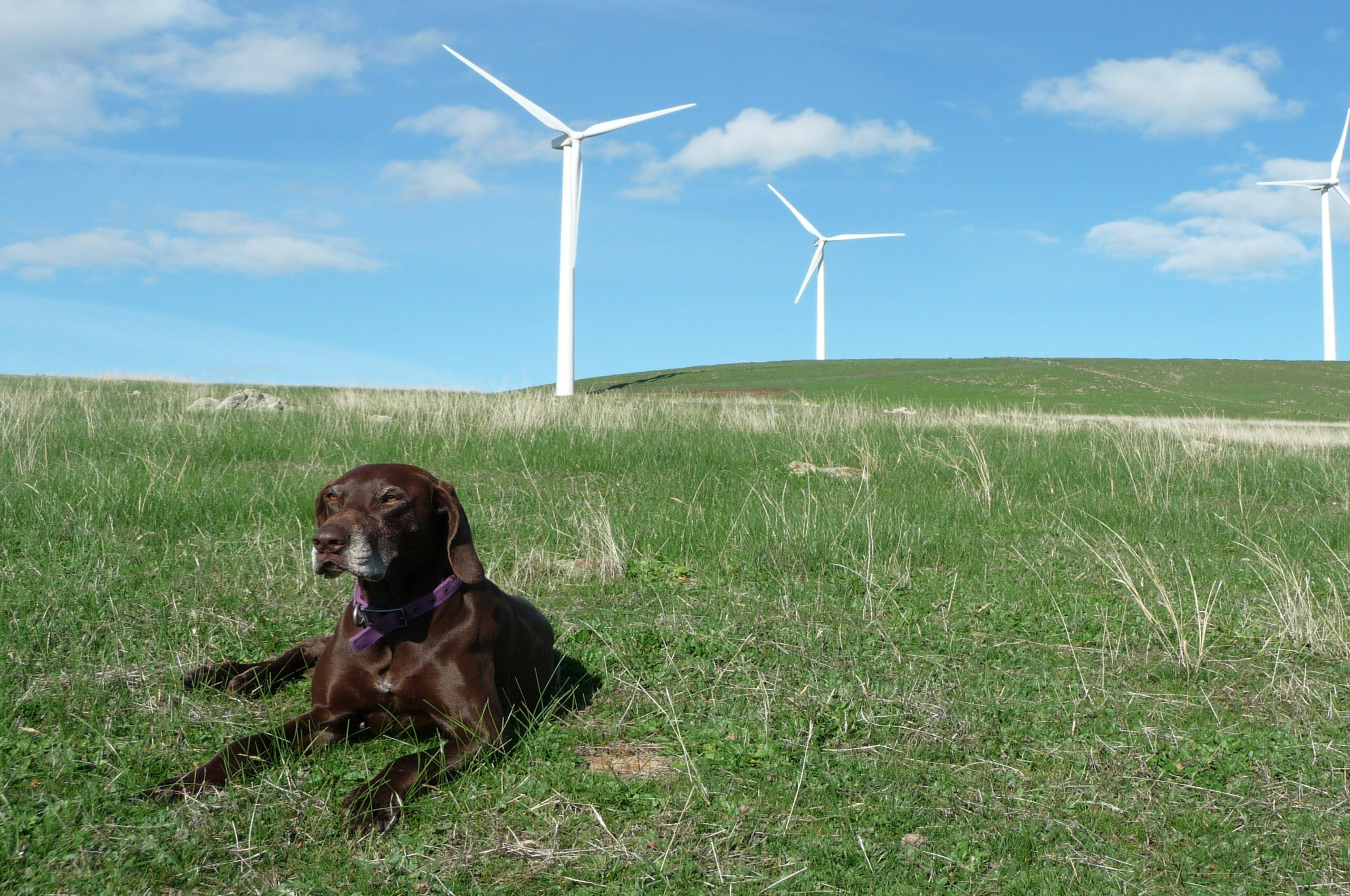Bellbird Picnic Area on the banks of Melbourne’s Yarra River is a regular haunt for bats.
‘Fly out’ counts estimate the local Grey-headed Flying-fox population ranges from 6,000 in winter, to 30,000 in warmer months as multitudes wing in from the north.
But when I meet bat expert Robert Bender, one late Spring afternoon, the park’s regular screeching, chirping residents are eerily absent.
Bender got hooked on bats in the early ‘90s as convener of the Friends of the Organ Pipes National Park, back when several bat boxes were established there. His relationship with the species goes beyond the scientific.
“We’ve watched some bats pretty much from birth to death, and when you do that, you become pretty affectionate towards the little animals,” Bender tells me.
As we walk, crunching gravel along the river, Bender enthuses for more than an hour about the animals (and would likely continue if not for the rain and the darkening skies). He has a soft spot for Gould’s Wattled Bat, a frequent tenant of the bat boxes. They are “very beautiful”, “devoted parents” and expert insect hunters, he says. Another winged visitor, the White-striped Freetail Bat, “just makes everybody drool because they’re just stunningly beautiful, very glossy”.
But he pauses every so often to wonder aloud, “we’re not seeing any flying foxes … I don’t know why”.
They’re part of a national trend.
Bender details the “fairly grim” long-term prospects facing Australian bats. “More and more of our species can legitimately be classified as in trouble, for all sorts of reasons. Habitat loss is the big one, global warming … the unfriendliness of cities towards little microbats … filament netting of fruit trees … and of course the wind farm issue is potentially another bit of trouble on top of all the others.”
A green-green dilemma
Australia has around 90 species of bats, ranging from megabats like flying foxes (with up to a metre’s wingspan), to insect-eating microbats (some small as a thumb, weighing less than a 10 cent coin). Fourteen are federally listed as threatened.
Added to the long list of threats facing the animals is the ‘wind farm issue’ Bender alludes to.
In Victoria, survey data suggests thousands of bats die annually due to wind farms, with one expert estimating the toll ranges between 12,000 to 40,000 bats per year. Studies in Germany and North America number bat deaths, due to wind energy, in the hundreds of thousands each year.
Biologist Dr Christian Voigt – a bat expert based at the Leibniz Institute for Zoo and Wildlife Research in Berlin, Germany – calls it a “green-green dilemma”.
“We want to protect biodiversity. And we want to protect the climate … These are two important environmental crises that we have to deal with.”
Certain bat species migrate across Europe, mostly travelling through Germany, where there are 30,000 wind turbines. Studies show bat fatalities in Central Europe average 14.3 bats per turbine (ranging from 1.5 to 30 bats per turbine).
“Five bats or ten bats per wind turbine, that sounds negligible. But when you extrapolate it on a larger scale, then it’s a big, big problem.”
In North America, migratory tree-roosting bats account for nearly 80% of bat fatalities at wind farms, according to Dr Cris Hein, a senior project lead in the National Renewable Energy Laboratory’s wind and wildlife program, based in the US. On average, 12.25 bats are killed per turbine in the US, a number which varies by region.
Problematically, it’s not bad navigation. “Certain species are attracted to wind turbines,” Hein says. “When we point thermal cameras up and watch bat activity in and around wind turbines, we see bats contacting the structures like the tower, the nacelle, chasing the blades, making swoops and patterns.
“It’s not just bats randomly passing through and happening to get hit by the wind turbine blades; they’re spending time and increasing their risk.”
According to Hein, researchers don’t yet know why the bats do this. It’s possible bats view wind turbine towers as potential roosting sites, or are simply foraging and congregating in the area.
It’s not an easy death. According to Voigt, there are two main causes of bat fatalities from wind farms. One is blunt force trauma: the bats are hit by turbine blades, suffering broken arms, wings, skull bones. The second is internal bleeding, but the reasons for this type of injury are not fully understood.
“When you look at them, they are not suffering from external symptoms,” he says. “The bones are intact, so they haven’t touched the blades, but when you open the body … the thorax is blood-filled, the abdominus is blood-filled.”
Counting the cost in Australia
For nearly two decades, wind farms in Victoria have been monitoring bird and bat deaths as a condition of planning approval. Surveys run two to three years after construction and involve periodic searches for carcasses – by people or dogs – below the base of wind turbine towers.
In late 2020, data science company Symbolix analysed the results from more than 5,000 such surveys across multiple wind farms, building on earlier work by the Arthur Rylah Institute.
Symbolix found bat mortality rates in Victoria, range between 7 and 10.8 bats per turbine, per year.
Ecologist Emma Bennett has conducted post-construction surveys since the early days of wind energy in Victoria. Her company, Elmoby Ecology, uses detection dogs to search for bird and bat carcasses.

Emma Bennett’s first wind farm detection dog Elmo Credit: Supplied by Emma Bennett
She tells The Citizen, that recently at some sites, her searchers have found as many as twenty bats per turbine, per year.
With more than 1,200 wind turbines in Victoria today – and set to exceed 2,000 within five years – Bennett estimates fatalities range from 12,000 to 40,000 bats per year. Meanwhile, data on mortality rates in other states is lacking.
While many different bat species are impacted, one in particular – Bender’s drool-worthy White-striped Freetail Bat – makes up half of the overall toll. Next most affected is his favourite Gould’s Wattled Bat.
Critically endangered Southern Bent-wing Bats and the vulnerable Grey-headed Flying-fox (those usually found at Yarra Bend) are listed among thirteen species of bat most commonly found during carcass searches.
It’s a complex issue – but one that, unusually, might have a simple, effective solution.
Curtailment works
Bats are legally protected in Europe. And in Germany, wind energy guidelines were introduced around a decade ago. One measure – curtailment – requires wind turbines to stop spinning during limited periods of low wind and high bat activity.
It’s a lucky coincidence that periods of high bat activity coincide with low wind speeds (below 6 – 8 m/s). Wind turbines only ‘cut in’ – start producing electricity into the grid – at around 2 – 4 m/s, Voigt says. The turbines typically generate power at maximum capacity during steady winds between 10 – 25 m/s.
It’s a win-win for the green-green dilemma: curtailment can protect bats with minimal impact on electricity generation.
Voigt calls the measure “quite efficient”, reducing deaths to one or two per year, but he remains concerned about bat deaths at older wind farms which pre-date the requirement.
Hein is unequivocal. “Curtailment works,” he says.
In 2015, the American Wind Energy Association published a voluntary protocol to limit the rotation of wind turbine blades below the manufacturer’s cut in speed, which the association says reduces bat deaths by 30% at minimal cost.
In the US, curtailment is not a blanket requirement. Instead, it’s a strategy used in situations Hein calls a “regulatory nexus” – when wind farms pose a risk to protected bat species.
“We’ve been able to identify patterns in which bats are at risk”, he says: late summer and early autumn, at low wind speeds.
“If you keep [the wind turbines] from spinning, at night, during this two-to-three-month period, under low wind speed conditions, you can significantly reduce mortality.”
It’s already a narrow set of conditions, but NREL is investigating ways to limit the time frame even further, such as trialling the use of echolocation detectors.
Curtailment trial in Australia
Curtailment as a measure to protect bats has received scant attention in Australia, but its potential here is significant.
Bennett is the lead author of the first Australian curtailment study at Cape Nelson North wind farm in Victoria, proposed after six Southern Bent-wing Bats were found during post construction monitoring.
Published in Austral Ecology, the four-month trial found that increasing the wind turbines’ cut in speed from 3 to 4.5 m/s halved bat mortality rates, while reducing annual power output by just 0.16%.
Pacific Hydro operates the wind farm and funded the study, but declined to comment on whether curtailment continued at the site, or other steps taken to reduce bat deaths.
Bennett says that renewable energy companies tell her they are constrained by out-dated planning permit conditions requiring them “to spend the money monitoring, not curtailing”.
“We’ve got one small curtailment project happening,” she says. “But ultimately, what’s right for industry is a long-term curtailment strategy across our country.”
The renewable energy boom
The urgency for bats is growing.
The Australian Energy Market Operator anticipates large-scale wind and solar is set to expand nine-fold in coming decades, with the Federal Government now committed to fast-tracking renewable energy development.
Both state and federal governments are responsible for assessing the environmental impact of wind energy projects, which includes the impact on bats.
A spokesperson for the Federal Government’s climate, energy and environment department says projects likely to have a significant impact on protected species, including the Southern Bent-wing Bat or Grey-headed Flying Fox, must be referred for assessment, and will only be approved under strict environmental standards, “including appropriate avoidance, mitigation and monitoring measures”.
The Victorian Government’s environment and planning department declined to comment.
Clean Energy Council’s director of energy generation, Dr Nicholas Aberle, says the industry body is familiar with recent Victorian studies indicating wind turbines can cause bat fatalities.
“The Clean Energy Council is convening active conversations within the industry to explore risk-based mitigation options appropriate to each wind farm, including the potential for smart curtailment,” he says.
Better baseline data is needed to understand particular species, he says, enabling wind farms to develop targeted plans based on each site.
But as Aberle notes, a key difficulty is the lack of basic information about bats.
Bennett agrees. “The main reason I’m concerned about them, is we don’t know what the impact would be to the population. We don’t have good data, like we do on birds. We don’t know how many there are, where they’re living, what areas they’re using, and all their foraging habits.”
It’s not just an Australian deficit. “Bats are very elusive, a cryptic taxon”, Voigt says.
“They’re just difficult to study,” Hein says. “They’re secretive, they’re quiet, they fly at night. Many of them are small. And the methods we use to get population data for other animals, it just isn’t possible for bats.”
Back on the banks of the Yarra, Bender fears for his adopted community.
“If you interfere with the life of a slow breeder, you’re threatening the future of the species. And that’s what we’re doing. We’re interfering with their lives. We’re destroying their habitat, chopping down trees and warming the planet … I can’t tell you much about the wind farms but it’s just one more problem on top of other very, very serious problems. They’ve got more than enough to cope with.”
This story was supported by an early-career reporting grant from the Science Journalists Association of Australia. The SJAA Grant Program is supported by the Judith Neilson Institute for Journalism and Ideas. It is co-published with Cosmos Magazine.




